The loud wake-up call generally starts around 4:45 a.m. and lasts for at least 15 minutes. From our lodge it’s hard to tell from where the call emanates – it’s a deep bass that rumbles in from the forest and seems near, but then again it could be miles away. And then there’s often an answering call, emphatic and defiant, from somewhere else in the forest. So our mornings often begin, overhearing jungle talk in the land of the golden-mantled howler monkey.
The golden-mantled howler, Alouatta palliata palliata, has for us been often heard but rarely seen. From our Cavalonga Trail we sometimes stumbled upon a family, and some of us (yeah, that’s me) liked to get into a conversation. I’ve learned to be a bit cautious about this, as a male howler can mistake my answering howl as something of a threat, and here’s the thing about male howlers: they enjoy a height advantage. We humans are creatures of the ground, while the howlers live on high. I’ve discovered that from their canopy perch they can “rain down” their disapproval, a/k/a urine or feces. As I said, you have to be respectful or, if you dare to converse, at least be nimble.
There have often been months between howler monkey sightings at Finca Luna Nueva, which differs from the more frequent howler experiences at beaches or at some forest fragments on the Pacific slope. Howlers, truth be told, are just not that into us, and the forest at Luna Nueva is endless. Unlike at those beaches or forest fragments, our howler neighbors don’t need to be near us, and they generally keep their distance. They like to eat tender young leaves and some fruits, they have their family dynamics, they sleep all night and for most of the day, and they don’t want to be bothered with silly old white-bearded Homo sapiens yelling at them. They’re content just singing their morning and afternoon songs and privately munching.
But then we built the bamboo observation tower in an area of the farm known to be a howler haunt.
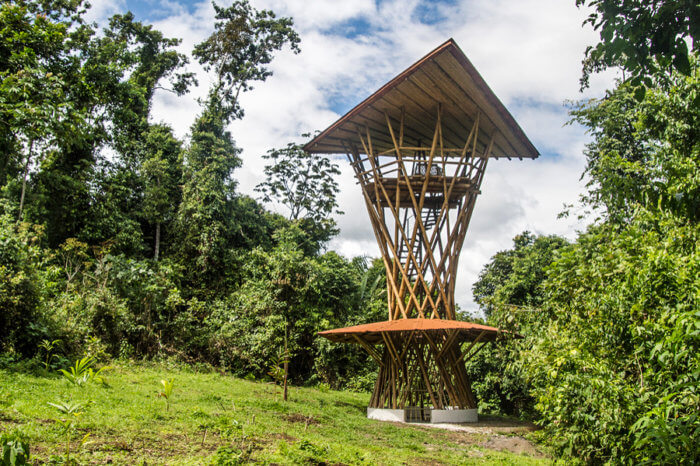
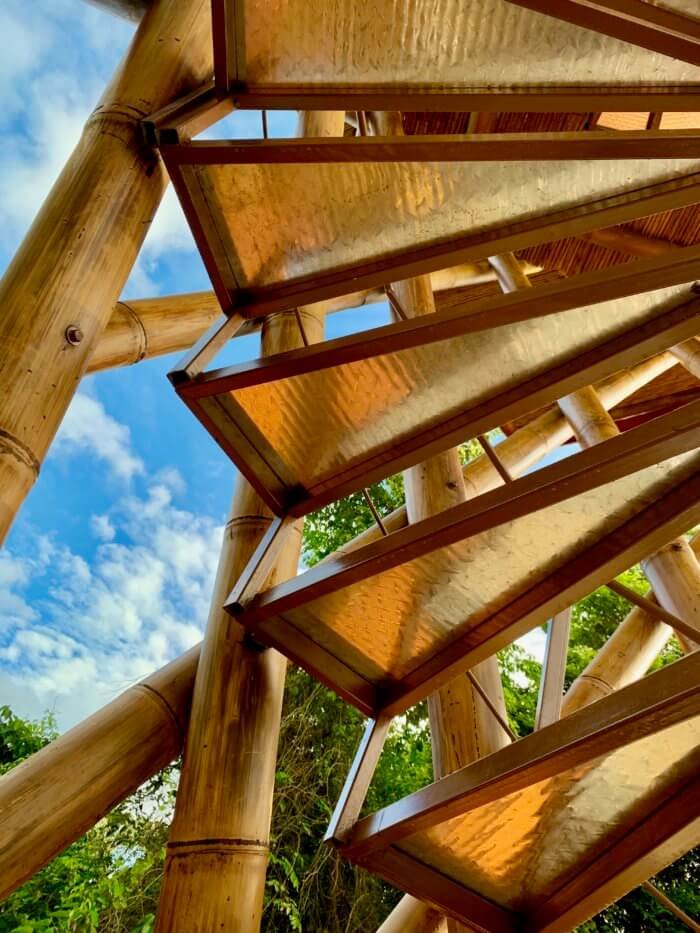
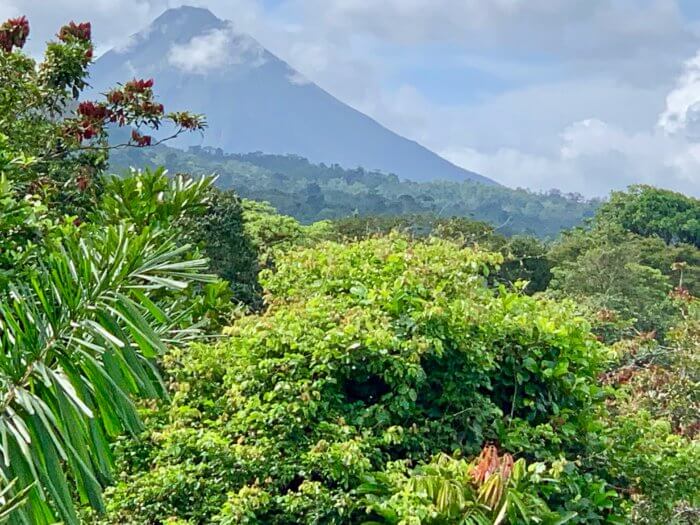
The new observation tower is on the edge of our regenerative agroforestry where the farm meets the forest, and we knew that howlers had been seen in that location from time to time. Might we be seeing more of them? This morning we got our answer.
Our resident photographer and chocolatier, Carlos Rodriguez, perfectly timed his morning visit to the tower and caught the howler troop in lazy action.
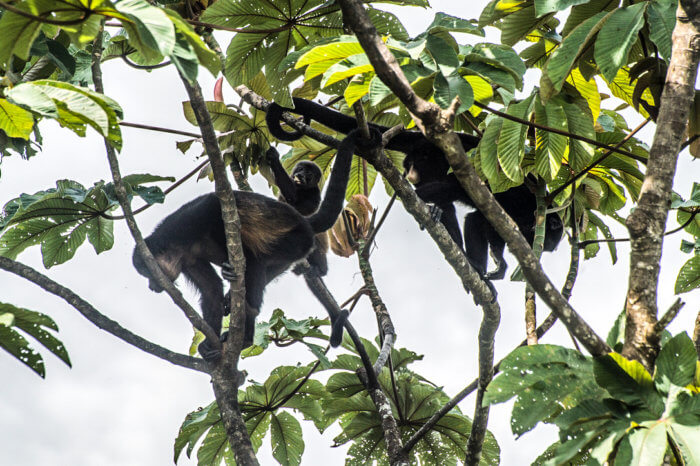
The unmistakable alpha male checked us out – just who was observing whom? Can you see the dark hairs that protrude on his back? That’s the “mantle” characteristic of the Golden-mantled howler.
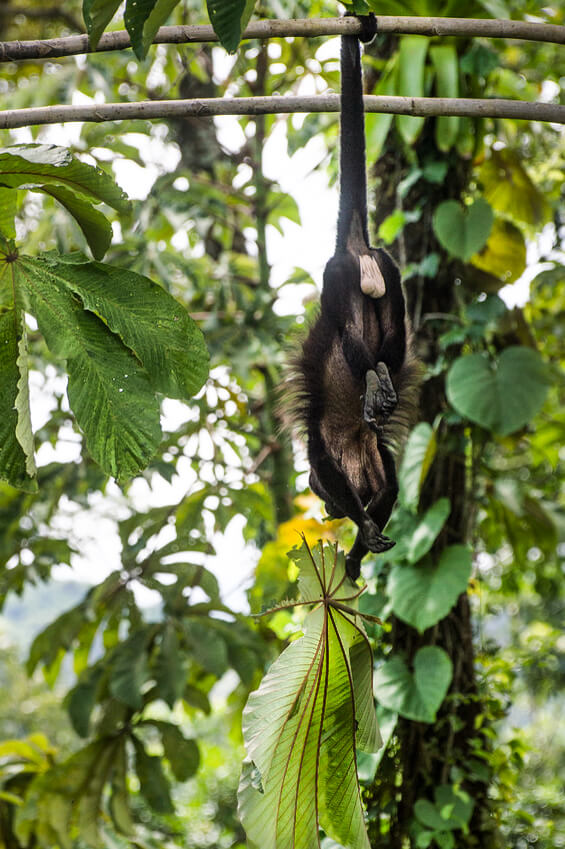
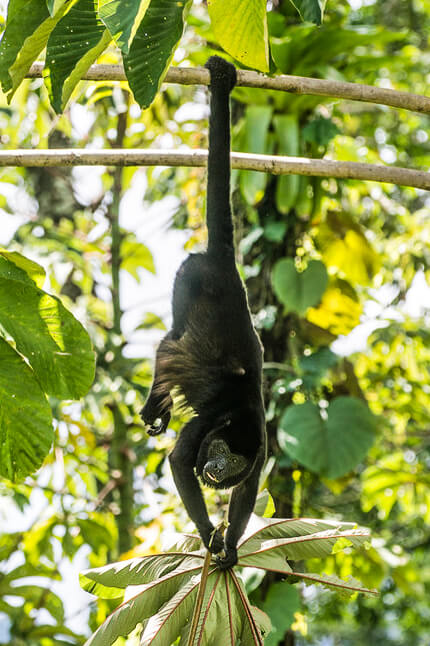
This is a family-friendly blog, so parents reading this blog aloud to children might want to skip to the final paragraph. Now that I have your attention, let’s talk about those testicles. For one thing, the scrotum is white, which certainly commands attention as it dangles from above. But why? The easy answer is that its prominence is a sexual display, and Darwin has explained that many male physical characteristics are a product of what he called the “sexual selection” preferences of potential mating partners.

In other words, male howlers have this startling display because, well, female howlers prefer males that way. But it seems dangerous, doesn’t it? The shock of white is unmistakable, and it must make the males more visible to jungle weasels and the big cats that hunt in our forest. One can only conclude that the mating advantages earned by such a display outweigh the dangers, but it makes you wonder.
And then there’s the sheer size of the sack. That just can’t be ideal for a climbing and jumping creature, but there it is. Why? Turns out there’s science from the University of Cambridge that helps to explain this surprising physical characteristic.
Remember how Darwin’s sexual selection explains the white scrotum? Females prefer males with that characteristic, so males compete for females on the “bigger is better” strategy. Female howlers, however, also appear to prize deep and loud voices, so males have also competed by developing vocal chords capable of producing the ridiculously loud bass sounds that awaken the forest every morning.
Booming voice boxes and pendulous scrotums require lots of energy – they’re anatomically equivalent to a stretch Hummer, and they burn fuel! The challenge for howler males is how to pay for this metabolic diesel, as all howlers are indolent vegetarians who sleep most of the day. There are simply not enough “lazy” calories of “leaf” energy available to support both giant sacks and giant voice boxes, so howler males are faced with a tough choice on their tight food budget: big balls or big calls. And every species of howler has differently resolved that evolutionary trade-off.
We can’t guarantee that the howlers will be at that cecropria tree when you’re on our observation tower, but howlers are known to reuse routes in the forest and return to particular trees that provide food. On any given day howlers generally only move about 2,500 feet, and their overall territory is usually only about 25-150 acres. So the howlers like our farm, like the area around the observation tower, live for about 25 years, and as creatures of habit are likely to return to their cecropria tree to eat colorful young leaves. And to observe the new primates who’ve just built a tower in their neighborhood.

If you’d like to see and hear a male howler monkey in full voice, click here for the show. Or better yet, come visit us for your early-morning wake-up call in the rainforest.

